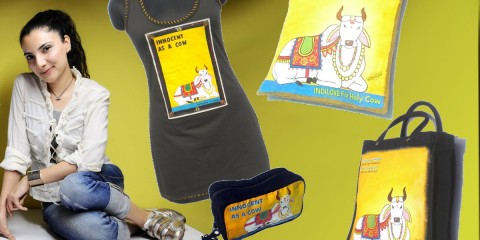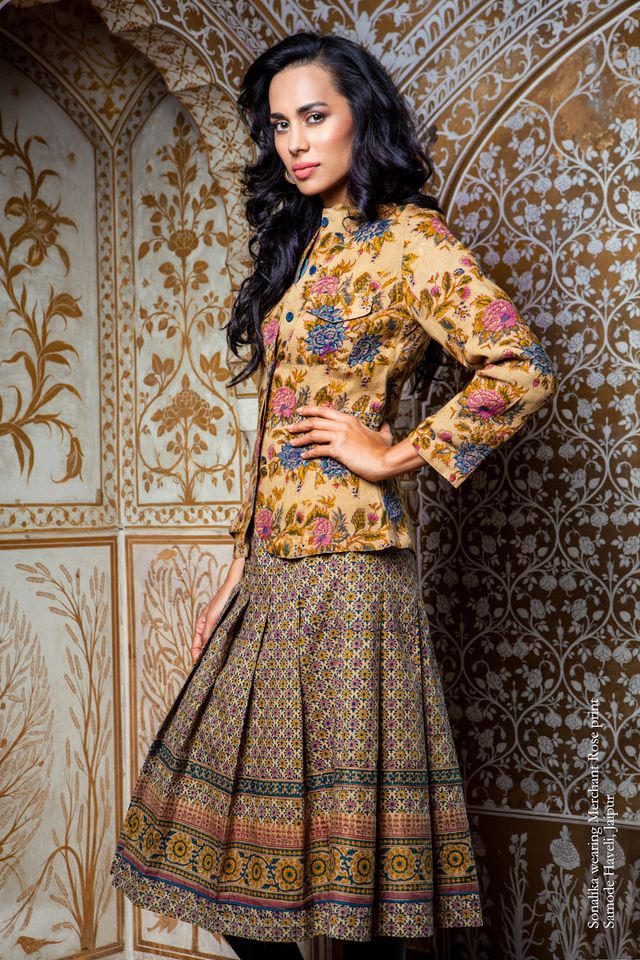Written by Vibei Kuotsu
Today, fashion brands are being marketed like never before through social media, celebrity endorsements, online shopping, deals, etc. Many brands are also evolving towards creating green and sustainable products to cater to environmentally conscious consumers. There are also a crop of brands in India who have been creating only organic clothing. Though a relatively new trend in the country, many of our handlooms like sarees have been manufactured by village-based craftsmen for centuries.
Eco-friendly products are organic products which are natural and do not harm the environment, they replace chemicals with green materials. With the coming of eco-friendly products, many lives have been changed and saved.
Eco friendly fabrics are made out of cellulosic or other organic fibers like viscose, modal, bamboo jersey fabrics and coloured using natural and vegetable dyes. Here are some Indian brands that have been using eco-friendly fibres:-

Fab-India: The products of Fabindia – one of the largest private retail platforms for handcrafted products in India – are mainly sourced from villages, helping to provide and sustain rural employment in India.

Indigreen: Indigreen was started by lifestyle journalist Nidhi and Industrialist Gaurav G. They are 100% organic and are made of organic cotton, bamboo fabric and hand woven organic khadi. They are mainly known for being non-toxic and environment colour friendly.

No Nasties : They particularly function with the aim “No genetically modified seeds, no synthetic pesticides or fertilizers, no carcinogens, no high-interest loans, no child labour, no price exploitation, no suicides!”

Forty Red Bangles: Forty Red Bangles is a socially conscious and ecologically responsible company. Each piece is handcrafted and personality-filled and pays homage to the earth; incorporating ecological elements into its design and construction. The product line includes organic women’s cloth and accessories, handcrafted jewellery, natural candles, up-cycled homewares, organic handmade kidswear and toys.

Samanta: Samanta uses no chemical pesticide. The brand was founded by Ben and Bharat and uses packets which are made of 100% recycled materials.
Tvach: Tvach has become a high fashion label with the use of Natural Dyes and organic Fabric such as organic cotton, silk, bamboo, soybean, pineapple, banana, khadi, aloevera, hemp, ramie and wool. They use dyes such as turmeric, madder pomegranate, myrablam, beetroot etc.

Anokhi: As pioneers of hand block printing for the export market, Anokhi has built on these for the last thirty years. The hand block is carved out of wood and is the simplest of printing devices. Dyeing with vegetable colours is the oldest of colouring techniques.

Bhu:sattva: Bhu:sattva is a Gujarat based organic clothing brand that makes use of fabric featuring natural fiber. Fibres used in weaving these wonderful accoutre are hemp, bamboo, organic cotton and silk, soya bean, modal, aloe vera, banana, pineapple fibre and milk protein fibre, flax, jute, khadi, while beetroot, pomegranate, henna, catechu, teak tree leaves, turmeric, madder red, kesu, haritaki, sewali flowers, indigo are use as dyes. Their techniques of weaving clothes are hand embroidery, block printing and painting.
Do You Speak Green: Do You Speak Green offers an authentic range of eco-friendly casual wear and Yoga wear for men, women, kids and infants. They use sustainable blends of organic cotton, bamboo, modal and even post consumer recycled polymers (recycled polyester) blended with organic cotton waste.

Jaypore: Crafted from eco-friendly natural processes, Jaypore products are handcrafted using handloom textiles from across India.

Grassroot: Grassroot is the result of Anita Dongre’s commitment to empowering rural women, employing traditional craftsmanship and using eco-friendly fibres.
Organic products help farmers, support livelihoods and also promote a healthy lifestyle. And good news also is that organic clothing does not anymore have that dull and boring ‘special organic look’ it used to have. Meanwhile, it’s cute and colorful, too. So, except for its outstanding safety and for a slightly higher price, – and sometimes not even that – it hardly differs from any other clothing anymore.
(Edited by Joselyn Joseph)

